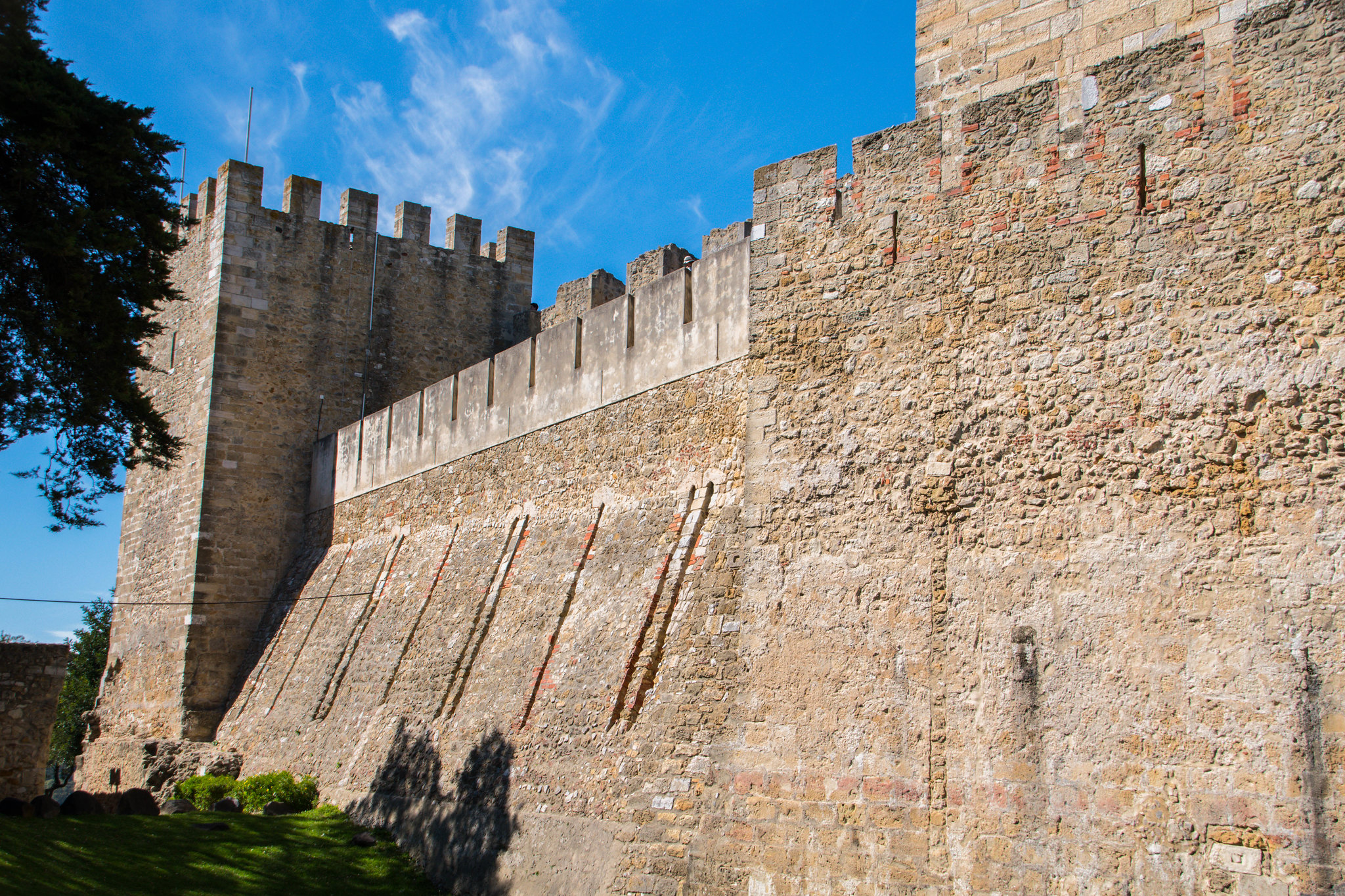São Jorge Castle, perched atop the highest hill in Lisbon, stands as a testament to Portugal’s rich history and medieval architecture. This iconic fortress, with its imposing walls and strategic location, offers visitors a glimpse into the country’s turbulent past and provides breathtaking panoramic views of the city below.
As you approach the castle, you’ll be struck by its formidable presence. The ancient stone walls, weathered by centuries of sun, wind, and rain, seem to whisper tales of battles long past. Stepping through the main gate, you’ll find yourself transported back in time to an era of knights, kings, and conquests.
The castle’s fortifications are a marvel of medieval engineering. Thick walls, some reaching up to 12 meters in height, encircle the entire complex. These walls were designed not just for defense but also to intimidate potential invaders. Interspersed along the ramparts are numerous watchtowers, each offering a unique vantage point over the surrounding landscape. In times of siege, these towers would have been manned by vigilant guards, ever watchful for approaching enemies.
One of the most impressive features of São Jorge Castle is its keep, or Torre de Menagem. This central tower, rising high above the rest of the fortifications, served as the last line of defense and the residence of the castle’s commander. Today, visitors can climb to the top of the keep for an unparalleled view of Lisbon and the Tagus River.
As you explore the castle grounds, you’ll come across several cisterns, crucial for storing water during long sieges. These underground chambers, with their vaulted ceilings and cool, damp air, provide a stark contrast to the sun-baked courtyards above. It’s easy to imagine how vital these water reserves would have been for the castle’s inhabitants during times of conflict.
The castle’s defenses weren’t limited to its walls and towers. A deep moat once surrounded the fortress, providing an additional obstacle for would-be attackers. Although the moat is now dry, its impressive depth is still evident, giving visitors a sense of how challenging it would have been to breach the castle’s defenses.
Throughout the castle, you’ll find exhibits that bring its history to life. From suits of armor and ancient weaponry to interactive displays explaining siege tactics, these exhibits offer a fascinating insight into medieval warfare and castle life. Don’t miss the camera obscura in the Tower of Ulysses, which provides a unique 360-degree view of the city using lenses and mirrors.
As you walk along the castle walls, take a moment to appreciate the strategic brilliance of its location. From this vantage point, defenders could spot approaching enemies from miles away, whether they came by land or sea. The castle’s position also made it an ideal place for royalty to reside, safe from potential threats while enjoying unparalleled views of their domain.
São Jorge Castle has witnessed centuries of Portuguese history, from the Moorish occupation to the Christian Reconquista, and from the Age of Discoveries to the present day. Its walls have withstood earthquakes, sieges, and the passage of time, standing as a proud symbol of Lisbon’s resilience and endurance.
As the sun sets over Lisbon, casting a golden glow on the castle’s ancient stones, it’s easy to feel a connection to the countless generations who have stood in this very spot, gazing out over the city below. São Jorge Castle is more than just a tourist attraction; it’s a living piece of history, inviting visitors to step back in time and experience the grandeur and drama of medieval Portugal.
São Jorge Castle stands as a testament to Lisbon’s rich history and strategic importance. Perched atop the city’s highest hill, it offers panoramic views of the Portuguese capital and the Tagus River. The castle’s origins date back to the 11th century, with subsequent expansions and modifications by various rulers. Its robust fortifications, including towers and battlements, reflect medieval military architecture. Today, São Jorge Castle serves as a popular tourist attraction, providing visitors with insights into Lisbon’s past and offering a glimpse into Portugal’s cultural heritage. The castle’s enduring presence continues to shape the city’s skyline and serves as a symbol of Lisbon’s resilience and historical significance.

